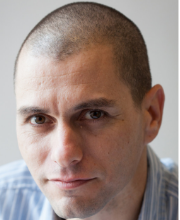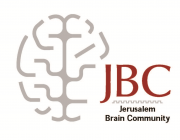Dr. Shai Sabbah is a senior lecturer in the Department of Medical Neurobiology, the Faculty of Medicine, the Hebrew University of Jerusalem. Dr. Sabbah completed his postdoctoral research in the Department of Neuroscience at Brown University, Providence, Rhode Island. His research there focused on the tuning of direction selective cells in the retina, and its role in image stabilization. Dr. Sabbah’s academic journey began with an undergraduate degree in biology from the Technion - Institute of Technology in Haifa. He went on to the Hebrew University for his master’s degree in the Department of Evolution, Systematics and Ecology. For his doctorate, Sabbah travelled to Queen’s University in Kingston, Ontario, Canada where he studied the functional diversity in the color vision of fish.
Research Interests
The laboratory of Dr. Shai Sabbah studies retinal and brain circuits that mediate the effect of abnormal lighting on mood.
Light impacts mood in ways we are only beginning to recognize. The short days of winter can trigger seasonal affective disorder (SAD). Whereas, combining light with antidepressant therapy outperforms antidepressant therapy alone, not only in SAD patients, but also in non-seasonal major depressive disorder (MDD). Thus, light affects mood and can augment antidepressant therapy. However, the mechanisms underlying the effect of light on mood have remained unclear. The recent demonstration that a novel retino-thalamo-frontocortical pathway is necessary and sufficient for the induction of depression by abnormal lighting places us in a unique position to resolve this mystery. Our lab studies the synaptic input, functional organization, and broader behavioral significance of this pathway. The mechanistic insights obtained will pave the way for the development of treatments for diverse light-dependent mood disorders.
We use mouse genetic models and combine: (1) in vitro and in vivo functional imaging and electrophysiology, (2) reconstructions of neural circuits using light and electron microscopy, (3) optogenetic and chemogenetic manipulations of neural activity, and (4) behavioral analysis.
We are currently recruiting highly motivated candidates for M.Sc. and Ph.D. studies


